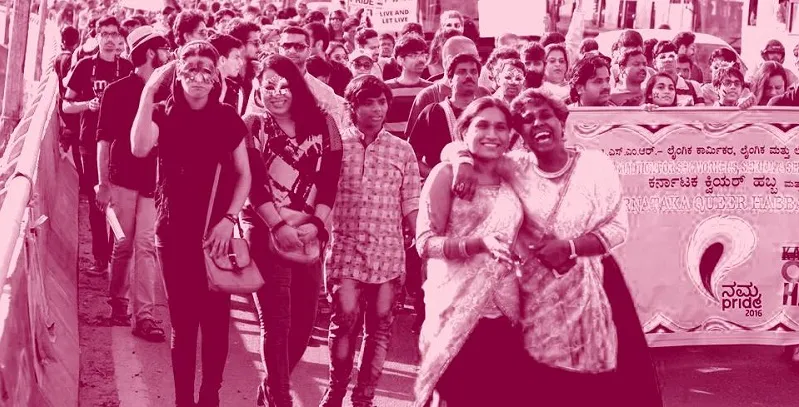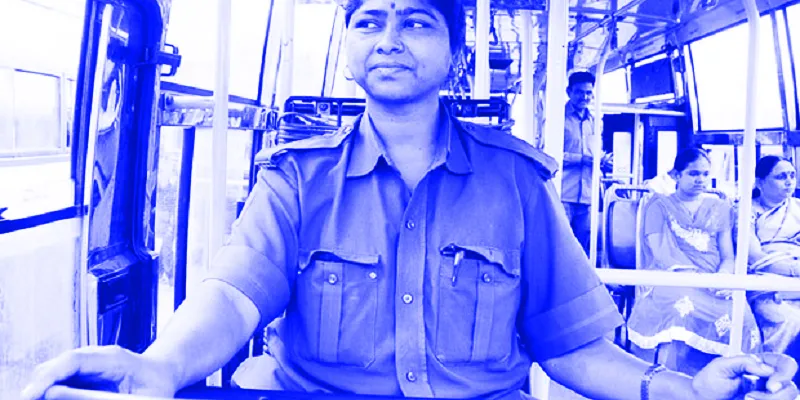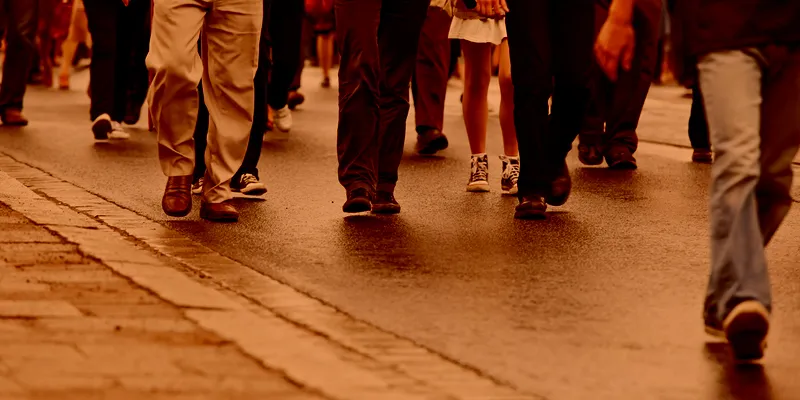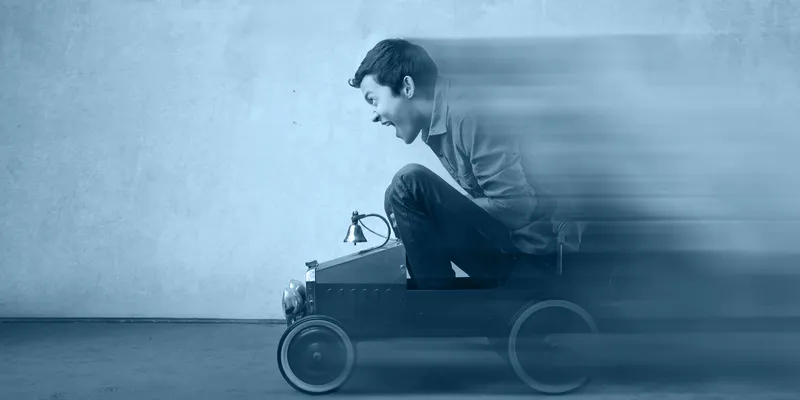From steel flyovers to water disputes — the 10 shades of Namma Bengaluru in 2016
To say that the year 2016 was an eventful one for Bengaluru would be putting it mildly. From the Cauvery violence to the city being named one of the top startup hubs in the world, here’s what made the headlines in the Silicon City this year.
As the year 2016 comes to an end, the city of startups winds up yet another rollercoaster ride. Namma Bengaluru has been a favourite amongst visionaries and game changers, for reasons quite obvious. While not without faults, the city does not shy away from its problems, very often even flaunting its imperfections. But how does one conclude a year that was and wasn’t ours? Well, let’s just try (that’s what we Bengalureans do, we never give up).

The last year has seen traces of drama in each and every sector. Be it education or startups, politics or infrastructure, Namma Bengaluru topped the charts in almost every second controversy, and why not, we do believe in being at the top. Whether you took a long sabbatical or were a part of this marathon, let’s just rewind a year that took social media and headlines by storm.
1. Political disruption
Going all the way back to the year 1892, when Madras Presidency and Mysore signed an agreement to share the Cauvery river water, the Cauvery issue has been a prominent factor in the relations between the two regions for ages. The agreement was renewed between Tamil Nadu and Karnataka in 1924 under the supervision of the Government of India. The Cauvery basin, which covers a large expanse of land in the two states, also has traces in Kerala and Puducherry as well. The bitterness shared by those in both states over the division of the river’s waters was in the news this year, grabbing widespread attention when violence broke out in Bengaluru and parts of Tamil Nadu, with hooligans targeting the opposing minority community in each state.

Though the news was a national outrage, it did little to influence the common needs of farmers and the environmental concerns of both the states. With the Karnataka government continuously failing to release the mandated water to Tamil Nadu, then Chief Minister Jayalithaa filed an interlocutory petition in the Supreme Court in August 2016, seeking the release of water as per guidelines of Cauvery Tribunal.
Also read: E-commerce stands still in Bengaluru as Cauvery flows to Tamil Nadu
Announcing its verdict in the case, the SC had directed the Karnataka government to release 12,000 cusecs of water to its neighbouring state for 10 days, which is now extended till further notice.
#DisplacingCitizens
While the city was still recovering from the Cauvery water protests, the local civic body, the Bruhat Bangalore Mahanagara Palike (BBMP), quietly renewed its demolition drive, which it had started in late July. The drive, which focused on the encroachments of lake beds and storm water drains (rajakaluves), got underway soon after heavy rains flooded the south-west corridor of Bengaluru. The city recorded 250 mm of rain, its highest in the last five decades, and over 600 houses were submerged.
Both the National Green Tribunal (NGT) and the Supreme Court have come down heavily on builders in Bengaluru. The NGT directed civic authorities to demolish or disallow any further construction within 75 metres of a lake and 50 metres of primary storm water drains. The BBMP had also released 1,923 revenue maps of storm water drains in Bengaluru on their website. Among the areas under the radar were Yelahanka, Bommanahalli and Mahadevapura. This incident highlighted the infrastructure collapse the city has been observing over the years.
2. Citizens reclaiming public spaces
This year saw citizens who are known for their easy going and polite nature take to the streets to demand a better city.
The Congress-led government under the leadership of CM Siddaramaiah had approved a 6.7 km steel bridge starting from Basaveshwara Circle to Hebbal. This particular proposal comes with a price tag of a whopping Rs 1,791 crore and at a loss of over 800 trees and the destruction of many heritage buildings that the city took pride in. The flyover would have three up-ramps and four down-ramps, and as many as 268,000 vehicles are expected to ply on it. But one wouldn’t be blamed for questioning the logic behind this proposal, which will shave just 7–10 minutes off the drive to the airport!

Faced with the prospect of a tremendous waste of funds and the defacing of the city, Bengalureans united and raised their voice in unison against the bridge. The scope of the movement later expanded, with volunteers looking for alternatives, including the use of the local trains via the #ChukuBukuRail campaign, which is yet to be addressed by the government.
Also read: Citizens come together to demand commuter rail system for Bengaluru
Meanwhile, the city also took a strong objection to the foamy and toxic Belandur and Varthur lakes. The issue garnered national attention, and CSR campaigns like the Nandi Hillathon were organised. Communities like the Ugly Indian and Let’s Be The Change spearheaded cleanliness drives and brought about significant change to the usually messy bus stations, flyovers and public spaces of the city.
3. Swacha Bengaluru
Gone are the days when the city proudly flaunted its ‘Garden City’ tag. Today, one would be hard-pressed to walk through the city without a feeling of depressed nostalgia for what has been lost over the past few years.
#PlasticBan
Starting from March 14, the city observed a complete ban on plastic and its variations. The ban included bags of above 40 microns in thickness (the previously allowed limit), thermocol and plastic beads. The city generates nearly 1,050 tonnes of plastic garbage a day, and this move was a relief to most environmentalists and citizens.

#WasteSegregation
On October 1, the city woke up to one of the broadest garbage segregation initiatives implemented in the country, with a new waste-management regime coming into effect. This move implied that residents and commercial establishments would have to segregate rubbish before it is collected by municipal workers. The generic waste was collected at doorsteps in two forms, dry and wet. Communities like the SWMRT (Sewage Management Round Table) had similar initiatives in the form of 2bin1bag and swachagraha, which saw a serious implementation.
Along with this, the government took a thoughtful stand by providing mid-day meals to pourakarmikas (civic workers).
4. Voices
#NammaPride
The Pride Walk 2016, organised by the Karnataka Queer Habba on 20 November, was one of the best Queer Pride Walks Bengaluru has witnessed. Hundreds of supporters displayed their love and pride against the backdrop of the ongoing trans-murders and the suppression of LGBT rights. Dressed in varied colours and costumes, the roads saw activists on the stretch from Tulasi Thota near City Railway Station to Town Hall, with the rainbow-coloured flag taking charge.

5. Womaniya
Women like Prema Ramappa Nadabatti and Rashmi Gangadhar continued to fill us with happiness and pride, signifying small but steady steps taken by women in the area of public transport.
In late October 2011, Rashmi became the first woman loco pilot of a metro train in India. Bengaluru's Metro is the first such service in India to have as many as nine women loco-pilots from the very beginning of operations. Today, 51 of its 292 train operators are women, who not only drive thousands of commuters, but also control operations of stations single-handedly for the stretches between Byappanahalli and MG Road (6.7 km), Nagasandra and Malleswaram (13 km), and Mysuru Road and Magadi Road (6 km).
Bengaluru and its Metro have always backed women, and the BMRC today employs 182 women. Namma Metro loco-pilots are trained by the Delhi Metro Rail Corporation (DMRC).

On the other hand, the only woman bus driver in Bengaluru, Prema Ramappa Nadabatti, has been working for the BMTC (Bangalore Metropolitan Transport Corporation) for the last six years, inspiring every passenger and passerby.
6. Sky is the limit
#NewRunway
Inaugurated in May 2008, Bengaluru celebrated its 100-millionth passenger on March 18. The fourth best airport in the country is gearing up to welcome its second runway on the south side of the airport. The airport is targeting completion of the new runway in two years.
This 4,000-meter-long runway will be parallel to the existing runway but will be 60 meters wide to accommodate Code-F aircraft like the Airbus A380 superjumbo. The construction master contract has been bagged by L&T.
Meanwhile, the Centre has also offered to cover 50 percent of the expenses to build a 65 km peripheral ring road that will connect four highways - Tumakuru Road, Ballari Road, Old Madras Road and Hosur Road - to provide seamless connectivity with Kanakapura Road and Mysuru Road, two other major highways connecting Bengaluru to Tamil Nadu and Kerala.

7. Barthira saar?
Well, well. How often have you used the above phrase while booking your mode of transport? Cab aggregators Ola and Uber went mainstream, greatly easing the burden on a congested city. The two taxi giants have now even extended their rule over autos!
Also read: Ola and Uber drivers ‘strike’ back against Bengaluru transport authorities
8. Making a dent
This year saw sportspersons and individuals from the entertainment world leave behind a global dent and make up Bengaluru’s “been there done that” quota.
#AditiAshok
One of those who carried the hopes of the nation far at the recently held Rio Olympics, Aditi is an Indian professional golfer whose fortunes are soaring at the moment. She has made history by being the first Indian to win the Lalla Aicha Tour School and thereby secure her Ladies European Tour card for the 2016 season.
With this win came the tag of being the youngest winner of a Q School for an international tour. Born and brought up in Namma Bengaluru, Aditi is the only Indian golfer who played in the Asian Youth Games (2013), the Youth Olympic Games (2014), the Asian Games (2014) and the Rio Olympics (2016).
Also read: Golfer Aditi Ashok becomes first Indian woman to win a Ladies European Tour
She also won the 2016 Hero Women's Indian Open, with a score of 3-under-par 213, and in the process became the first Indian to win a Ladies European Tour title. This Bengaluru lass is today basking in the glory of being the Rookie of the Year award winner.
#Balakrishna
48-time Open-State Karnataka Champion, four-time Mr Shresta Karnataka winner, Mr India for over seven years, and recipient of the prestigious Bharath Udai title; 25-year-old Balakrishna isn’t just any other man in the silicon city. Recently, he added to his impressive collection by clinching the Mr Asia 2016 title in the Philippines.
Also read: Meet 25-year-old water tanker driver Balakrishna, who is now Mr Asia 2016
The competition, which saw over 150 male and 100 female participants, was an Asia-wide bodybuilding championship. The young lad, who gracefully carries the tag of representing and winning the country a top medal, drives a water tanker for a living!
#KarunNair
An alumnus of the Frank Anthony Public School, Bengaluru, Karun recently achieved the feat of becoming the third player in international cricket to convert his maiden century into a triple century, by scoring an unbeaten 303 against England in his third Test.
This 25-year-old right-handed batsman and occasional off-break bowler has been playing for Karnataka and India. Having previously played for Royal Challengers Bangalore and Rajasthan Royals in the Indian Premier League, he was signed up by the Delhi Daredevils in 2016. He made his Test cricket debut in 2016 against England.

9. Namma Metro
Having completed the first phase (green line) of the Namma Metro project in 2013, the city witnessed the completion of the second phase (purple line) on April 30 this year. Ranked the 99th largest metro system in the world in terms of length and 92nd largest in terms of number of operating stations, the Bengaluru Metro is the first underground metro line in South India and carries an average daily ridership of over 175,000 passengers.
Also read: Namma Metro turns five, is still long way from carrying burden of traffic-clogged Bengaluru roads
On 25 April 2006, the Indian Cabinet approved the project, which was then budgeted at more than Rs 5,400 crore ($800 million) and later revised to Rs 11,609 crore ($1.7 billion) for the first phase, with Phase II’s budget being around ₹26,405 crore ($3.9 billion). As of now, the entire project is estimated to take off by 2030. The project, which is behind schedule, is still a huge hope for a city suffering from traffic woes.
10. #StartupCapital
Despite the controversies that plagued the city this year, Bengaluru still reigns as the premier choice for starting up, and is the only Indian city to be ranked among the top startup ecosystems in the world.
The only Asian city other than Singapore on the list, Bengaluru scores big on valuations and has increased exit values and a robust funding ecosystem. The city ranks 15th in the list of the top 20 startup hubs in the world, and plays host to the youngest entrepreneurs, with an average age of 28.5 years vis-à-vis Silicon Valley’s 36.2. Though the city lost the ‘Smart City’ tag, it has much more to offer. With the majority of Indian startups tracing their roots to Namma Bengaluru, the city is adapting itself to the new tag it has been gifted.

All said and done, Bengaluru is not a city to Benguloreans - it’s an emotion. It is about a legacy of hospitality and the welcoming attitude that the city feeds upon. As we wind up another tremendous and adventurous year, we can’t help but feel hopeful for the future of our city, hopeful that it reaches ever greater heights while avoiding this past year’s ignominious lows. Here’s to Bengaluru. Welcome, 2017.







